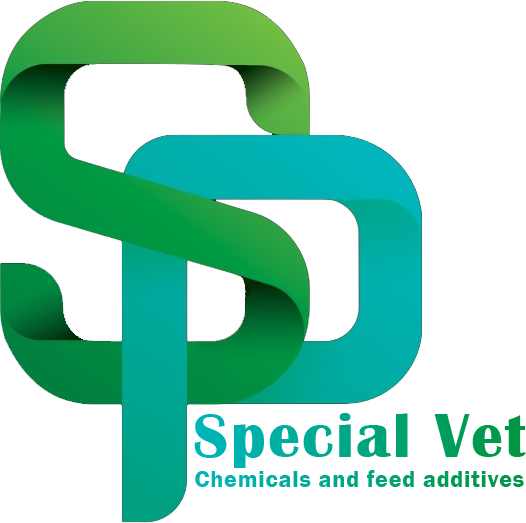
SUCCESSFUL PASSIVE TRANSFER IN CALVES
4 Steps to Achieve Successful Passive Transfer in Newborn Calves
Since calves are born immunocompromised, successful passive transfer of immunoglobulin G (IgG) is essential to protect calves from any disease they may encounter early in life. Successful passive transfer of IgG is defined as a calf blood IgG concentration equal to or greater than 10 milligrams of IgG per milliliter between 1 and 7 days of age.
This level can be achieved by feeding adequate and high-quality colostrum or colostrum substitute shortly after birth.
Unfortunately, the passive transfer failure (FPT) rate is alarmingly high (about 19%) and nearly half of all farms have at least one calf experiencing FPT. The risk of morbidity and mortality increases in calves that do not receive adequate amounts of IgG after birth. Feeding with insufficient amounts of colostrum has also been associated with reduced future milk production. Appropriate colostrum management protocols must be followed as these negative consequences must be avoided in order to maximize and maintain the profitability and health of your dairy herd. Typically, good colostrum management encompasses four main aspects;
1. Quality
While older research has recommended feeding calves equal to or greater than 100 grams of IgG in the first hours of life to ensure successful passive transfer, more recent research suggests that calves should receive 150 to 200 grams of IgG in early life. If you are using quality colostrum (equal to or greater than 50 grams of IgG per liter of colostrum), this requirement can be met by feeding 3 to 4 liters.
While these guidelines may seem simple to follow, the quality of colostrum can vary greatly between animals.
To avoid feeding unknown quality colostrum to calves, the optical Brix refractometer is an efficient and user-friendly way to determine colostrum quality. When measuring IgG, a Brix percentage of 21% to 23% means good quality colostrum that can be fed to calves without worrying about FPT. You can even use a Brix refractometer to measure IgG concentrations in the blood of farmed calves to assess the effectiveness of your colostrum management protocols. When measuring blood IgG content with a Brix, the cutoff for successful passive transfer should be a Brix percentage greater than 8.4%. The benefits of using a Brix refractometer far outweigh the already low costs, and dairy producers should consider their application as a basic farm tool.
2. Quantity
As mentioned above, if you are feeding quality colostrum (equal to or greater than 50 grams of IgG per liter), you should feed 3 to 4 liters of colostrum to ensure passive transfer. While this advice may seem easy enough to follow, it’s important to remember that not all calves have the same body weight and therefore not all can handle the same amount of colostrum. For example, Jersey calves (average birth weight 26 to 29 Kg) or small Holsteins (eg twins) should not be fed the same amount of colostrum as an average-sized (approximately 40 Kg) single Holstein. Instead of feeding small calves a large 4 liter meal immediately after birth, it is important to divide this meal into two smaller feeds (eg 2 liters at birth and 2 liters after 12 hours) to optimize absorption efficiency.
Feeding adequate colostrum is important not only for passive transfer but also for the future productivity of your calves. Calves fed only 2 liters of colostrum after birth have been shown to have a significantly lower average daily gain (ADG), double the veterinary costs, and produce significantly less milk during the first and second lactations compared to calves fed 4 liters of colostrum.
It was concluded that feeding a larger amount of colostrum results in an economic return of $160 per cow for the additional 600 Kg of milk that can be produced per cow during the first two lactations.
3. Timing
The timing of initial colostrum delivery is as important as the quality and quantity of fed colostrum. It has been well known since the 1970s that IgG absorption is optimal in the first hours of life and decreases in a linear trend as the calf ages. A more recent study conducted at the University of Alberta in 2018 showed that calves fed colostrum 45 minutes after calving had a higher concentration of IgG compared to calves not fed until six hours and 12 hours after birth.
Also, calves fed within 45 minutes absorbed 50% of the IgG present in the colostrum, whereas calves fed later absorbed only 35%.
Although the importance of feeding colostrum as early as possible has been recognized for decades, a 2010 study in Quebec showed that many calves still do not receive their first meal of colostrum more than six hours after birth. This is probably due to the late identification of the calf and late colostrum feeding due to inadequate night surveillance.
4. Low Bacteria Count
In addition to timely feeding of colostrum with adequate concentrations of IgG, the total bacterial count of good-quality colostrum should be less than 100,000 colony-forming units (cfu) per milliliter and the coliform count less than 10,000 cfu per milliliter.
A 2012 study conducted in 12 states in the US showed that 43% of samples did not meet these cut-off points for total bacterial count and coliform count, and 17% of samples had a total bacterial count greater than 1 million cfu per milliliter. High bacterial and coliform counts have been shown to be negatively associated with overall calf health as well as IgG absorption. This relationship illustrates the importance of collecting sterile and clean colostrum to reduce the possibility of bacterial contamination.
When colostrum quality is poor (for example, low IgG concentration, high bacterial count, blood), a better way to use a colostrum substitute may be considered if you do not have the means to continuously measure IgG in colostrum or if colostrum is not available.
A 2018 study showed that although blood IgG concentrations of calves fed with colostrum substitute or maternal colostrum were similar, calves fed with colostrum substitute were less likely to receive contaminated colostrum and were also less likely to receive treatment for diarrhea compared to calves fed with maternal colostrum. Therefore, if you have difficulty managing proper colostrum protocols on the farm, the use of a colostrum replacer can help eliminate health problems associated with young calves and ensure that your calves are always well fed.
